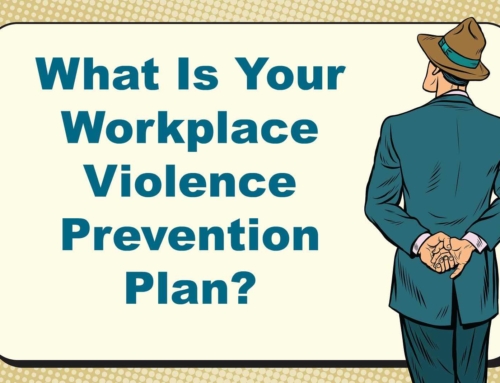Is Your Workplace a ZERO TOLERANCE ZONE?
Workplace violence is in the news a lot these days.
There are many stories across the land referring to the employer’s fundamental responsibility to provide a safe and healthy workplace for employees.
You probably know that there are 4 recognized and accepted sources of workplace violence that employers need to be aware of.
- Stranger violence
- Client/Customer violence
- Co-Worker violence and
- Relationship-related violence.
Most organizations have (and should have) a ‘zero-tolerance’ policy regarding the acceptance of workplace violence.
These policies usually make life very much easier when trying to decide how to answer the question, “What should we do about this?” following an instance of workplace violence.
The aggressor is dealt with firmly and often this means that they are shown the door in a move of terminating the employee for just cause.
That generally solves the problem…or does it?
Perhaps by being aware of the following case, employers might cast a different lens on a situation that they had previously assumed would be open and shut.
The case involves co-worker violence and was adjudicated by the Canadian Public Service Labour Relations and Employment Board.
See: http://pslreb-crtefp.gc.ca/Decisions/fulltext/2016-10_e.asp
It concerns a federal government employee who struck his supervisor at work hard enough to leave a mark after a short argument. The act scared the supervisor, who then ran down several flights of stairs in order to find a security officer and was followed all the way down by the aggressive employee in hot pursuit.
The aggressive employee never did formally apologize to the supervisor whom they had struck nor to the employer even though there was an acknowledgement by the employee that they regretted the incident.
As can sometimes be the case in workplaces, other employees, when polled, expressed concerns for their safety, especially if the aggressive employee was allowed to return to the workplace.
There were stories about the employee continually expressing how dissatisfied he was at work and it appeared that he did not enjoy positive relationship with many of his colleagues. Following an extensive investigation as well as several meetings with the employee, he was terminated by the employer.
Within the body of the Canadian Public Service Labour Relations and Employment Board hearing, it was held that the employer did not give proper attention to a medical note that the employee had provided to the employer at one of the investigative meetings held prior to his dismissal. The medial note pointed out that the employee had a medical condition which made him prone to mood swings, with some of those mood swings resulting in outbursts.
The employer had responded to the proffering of the medical note by ordering the employee to undergo a medical examination and the results of that examination concluded that the employee did indeed suffer from a condition which could have contributed to the incident. However, this examination was conducted several months after the incident, so the employer was left with no information regarding the employee’s condition at the time of the incident itself.
The Canadian Public Service Labour Relations and Employment Board determined that although the workplace violence incident was incredibly serious and deserved significant discipline, the employer should have given additional consideration to the medical information that he was in possession of.
The Board showed that within the results of the medical examination which was facilitated by the employer, the possibility had been raised that a medical condition could have contributed to the misconduct, but the employer didn’t properly investigate the possibility of accommodating him.
This was a particularly important misstep on the part of the employer, especially since within the medical report, it stated that the employee would be able to return to work.
Reinstate a Violent Employee – It Could Happen!
Well, the employer was ordered to reinstate the employee.
The lack of employment wages in the 3-year gap since the employee was dismissed counted as the ‘significant discipline’ for the employee but the employer was ordered to pay $25,000 in damages for discriminating against the employee.
As with any type of employee misconduct, a thorough investigation requires EVERY avenue to be pursued in order to show that the investigative process was thorough and complete, examining each mitigating condition.
While workplace violence is probably the most serious of behaviours that an employee can demonstrate, this case illustrates the fact that the problem is not always solved by simply thinking that you can dismiss the person.
Phil Eastwood is Senior Partner at Fiore Group Training Inc..
Fiore Group Training is passionate about Creating Incredibly Safer Workplaces by focusing on the people, relationships, supervision and leadership in today’s workplaces…wherever they may be.
How may we be of service to you?







Leave A Comment